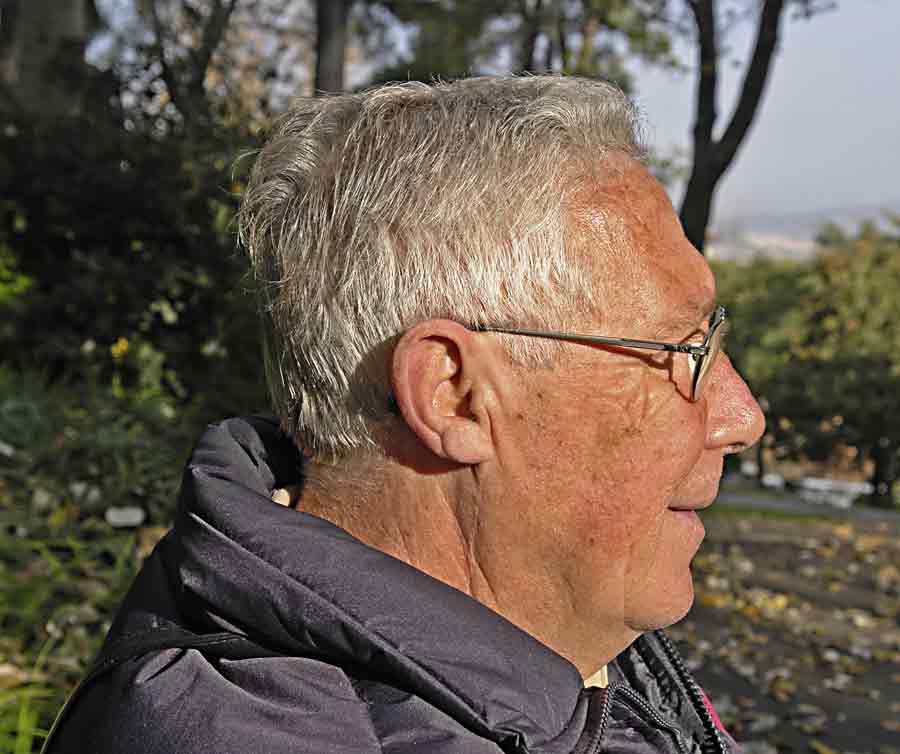ADT plus bevacizumab show promise in prostate cancer
ADT plus bevacizumab show promise in prostate cancer
6 Apr 2016Men with hormone-sensitive prostate cancer had a significantly longer relapse-free interval with the addition of bevacizumab (Avastin) to short-course androgen deprivation therapy (ADT), a small randomized trial showed.
Relapse-free survival increased from 10.2 months with ADT alone to 13.3 months when paired with the angiogenesis inhibitor. Adverse events were similar in the two treatment groups, aside from a higher incidence of hypertension in men treated with bevacizumab.
"Our data suggest that ADT plus bevacizumab may benefit a subset of patients with hormone-sensitive disease," Mary-Ellen Taplin, MD, of Dana-Farber Cancer Institute in Boston, and colleagues concluded. "We provide a rationale for combining VEGF (vascular endothelial growth factor) therapy with ADT to prolong the off-ADT cycle during intermittent ADT. ”Long-term follow-up is needed to determine whether some patients will have durable PSA responses with testosterone recovery and be able to remain off further prostate cancer therapy."
The study is one of the first to show a clinical benefit for angiogenesis-targeting therapy in prostate cancer, said Matthew Cooperberg, MD, of the University of California San Francisco.
Key eligibility criteria and clinical details
For the trial reported by Taplin's group, key eligibility criteria included increasing PSA level (≤50 ng/mL), PSA doubling time <18 months, low-burden metastatic or nonmetastatic disease, and asymptomatic metastases (lymph nodes <3 cm, ≤5 bony metastases). All patients received ADT and were randomized 2:1 to bevacizumab. Randomized treatment continued for 6 months, and biomarker assessment (34 cytokines and angiogenic factors) occurred at baseline, day 22, 3 months, 6 months, and relapse.
The primary endpoint was relapse-free survival. At the completion of randomized therapy, 80% of the bevacizumab-treated group and 77% of patients on ADT alone had relapse-free survival values <0.2 ng/mL. The difference in median relapse-free survival translated into a 53% reduction in the hazard ratio in favor of the bevacizumab arm. One-year relapse-free survival was 57% with bevacizumab and 31% without it. No patient had radiographic disease progression prior to relapse-free survival progression. Patients who remained relapse free in the bevacizumab group (N=17) had a median follow-up of 16 months versus 5 months among patients who received only ADT (N=8).
The authors reported that 71% of patients in each arm had testosterone recovery to >200 ng/dL, which occurred after about 10 months in both arms.

“A relatively small trial with heterogeneous inclusion criteria”
"The messaging that antiangiogenesis treatment will be best suited for a subset of patients based on biomarker analysis is well founded," Cooperberg, who was not involved in the study, commented. "Only a limited set of markers were tested in this study, however, and it's likely that with more contemporary tests, a more comprehensive interrogation of angiogenesis pathways could drive optimized patient selection for this type of combined treatment."
Noting that the trial involved a total of 102 patients, he added, "The obvious caveat is that it's a relatively small trial with heterogeneous inclusion criteria. The latter is a particular issue, given the mix of post-radical prostatectomy and post-radiation patients."
For men with nonlocalized prostate cancer, ADT remains the standard initial treatment, often administered intermittently to men who have nonmetastatic, biochemical (PSA) only, or low-volume metastatic disease. Few strategies have shown promise for increasing the time to development of castration-resistant prostate cancer (CRPC) or improving quality of life by prolonging the off-treatment interval of intermittent ADT, Taplin and colleagues noted.
The results indicate further evaluation
Angiogenesis has a well-known role in the pathogenesis of prostate cancer, including localized and metastatic tumors, and elevated levels of VEGF have been associated with disease progression. Preclinical research showed that VEGF inhibition combined with ADT led to significantly greater suppression of tumor growth compared with either VEGF inhibition or ADT alone.
The addition of bevacizumab to docetaxel improved progression-free survival and response rate in metastatic CRPC but not overall survival. Whether bevacizumab and short-term ADT might benefit hormone-sensitive prostate cancer had not been examined previously.
Grade 2/3 toxicity occurred in 69% of the bevacizumab arm and 26% of the ADT group. In addition to hypertension, the most commonly occurring grade 2/3 toxicities in the bevacizumab arm were musculoskeletal pain, infection, and headache. Hypertension and hot flashes were the most common treatment-associated adverse effects among men randomized to ADT alone.
"Although the use of antiangiogenic therapy in prostate cancer remains investigational, these results indicate that further evaluation of anti-VEGF-targeting therapy combined with ADT is warranted and may be a rational approach to prolong response to ADT, even after ADT is discontinued," the authors said.
Source: MedPage Today